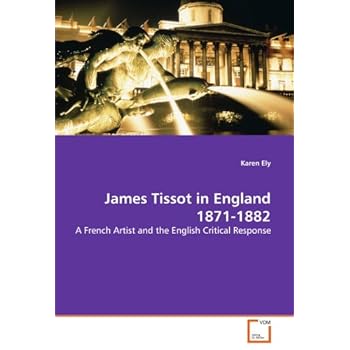James Tissot in England 1871-1882: A French Artist and the English Critical Response
Category: Books,Arts & Photography,History & Criticism
James Tissot in England 1871-1882: A French Artist and the English Critical Response Details
James Tissot was a French artist who immigrated to England in the wake of the Franco-Prussian War in 1870. He lived in England for a decade, and had a very successful career as a painter. His impeccable French technique, gentle humor, and depiction of the current social scene were instantly appealing to the English audience. However, English art critics often found his art to be "too French." This book explores just what the critics meant by "too French" as well as their differing perceptions of French and English art. The book also refutes the common wisdom that this criticism eventually destroyed the artist's career in England. Tissot's work was generally ignored in the early 20th century, but his reputation has been rehabilitated in the last forty years. The world has begun to have a better appreciation of his subtle psychological insight into the role of women in the 19th century, apparent in his art but generally ignored in the past. The book will be of interest to art and social historians, art critics and scholars, art educators, and anyone interested in the art, art criticism, and cultural values of the Victorian era.

Reviews
Karen M. Ely's very readable monograph on James Tissot is a lively mixture of art history, art criticism, and cultural comparison. Ms. Ely focuses her study of the French painter on the years of his sojourn in England: 1871-1882. We are treated to interesting and informed glimpses of the Victorian art world and the inner workings of the Royal Academy's yearly exhibition, the most prestigious art show in Britain at the time. The artist's responses to British taste and sentiment lead to an illuminating discussion of the differences between French and British culture and society. And Ms. Ely probes the artist's life, finding it representative of bohemian trends of the time, and gives us a fine portrait of Kathleen Newton, Tissot's muse, model, and mistress. Lavishly illustrated, the book offers a new perspective on an artist of great popularity in his time, but whose work dwindled in accomplishment and appeal when he returned to France. This is a book I highly recommend to lovers of art and students of late nineteenth century England. I give it FIVE STARS.--W.W. Vasse, Ph.D.



